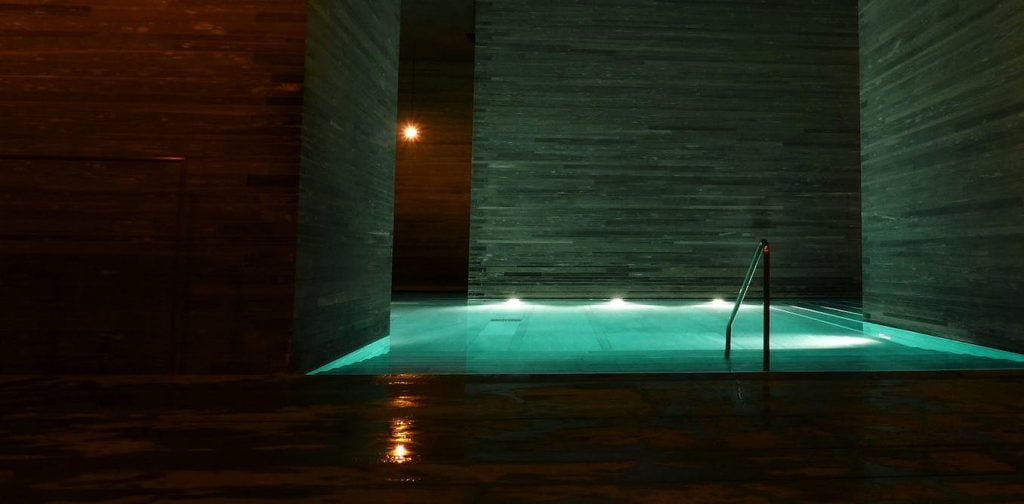Have you ever wondered why you feel cozy in some places while you feel stunned in others? Think about the last international airport you landed in, or a local coffee shop in your neighbourhood.
How we perceive these places is multifaceted. We often hear that we perceive our environments through five senses: sight, smell, touch, sound and taste. But what if there are more senses involved in our perception?
Architects concerned with “the ways we experience things, thus the meanings things have in our experience,” as articulated in the branch of philosophy known as phenomenology are concerned with a fuller picture of how we perceive our environments.
More senses
Beyond the traditional five senses, neuroscientific research also examines proprioception (sensing your muscles, their location, and their movements) and the vestibular system, which regulates the sense of orientation and balance in space.
Scientists are also examining a sense called “interoception” which refers to the perception of sensation from inside
your body. The most commonly experienced one is having butterflies.
(Astrid Westvang/Flickr), CC BY-NC-ND
Phenomenology in architecture
While architects across cultures and time have long considered the senses and design, the concerns of phenomenology as articulated by philosopher Martin Heidegger were introduced into architecture through architect Christian Norberg-Schulz beginning in the early ‘70s.
Architects concerned with phenomenology are interested in how to integrate a renewed fundamental understanding of perception to design better buildings.
Phenomenology in architecture refers to a shifting focus on giving users an experience. Beyond Norberg-Schulz, architects Juhani Pallasmaa and Alberto Pérez-Gómez have developed this approach, and architects Steven Holl and Peter Zumthor design based on the theories.
Thinking about approaching
Our perception of approaching a building, a city or an object within an environment depends on many factors.
Approaching a city in the middle of the desert is entirely different than approaching a town in a forest.
You can perceive and see a city in a desert in plain sight, and you might perceive the duration it takes to get there longer than it is in reality. When approaching a town in a forest, you will be busy looking around the forest, looking at animals or trees, and experiencing a shorter time than what it took you to get there.
When it comes to buildings, you will first approach them, enter them, and finally start exploring them. From the moment you are on the path of approaching, you start perceiving with all your different senses.
(Wojtek Gurak/Flickr), CC BY-NC
Here are some tangible examples:
Touch: Imagine the moment you are going to touch a front door knob. A wooden door knob will feel different than a steel one.
Smell: Sometimes, a specific smell can remind you of beautiful memories. It’s the same when it comes to buildings. Everyone can differentiate between the scent of a clean vacant space and a cottage in the woods.
Sound: You can get different feelings of space by just perceiving it with your ears. Compare a room with ceramic tiles where you hear shoes clacking along the floor and walking on a wooden floor where you hear the wooden floors.
(Shutterstock)
Sight: All of us have seen pictures showing a small house in the distance where a small light is on on a snowy day. That tiny light on a snowy day can be a fireplace we can feel just by seeing it in the distance.
Taste: It might be hard to link taste to architecture, but architecture can be a stimulus for taste. Specific colours and details can stimulate taste. For instance, marble might give you a particular sensation of taste.
Vestibular (movement) and proprioception (body position): These two senses are the foundation for orienting yourself in a space and being self-conscious within an environment.
Stimuli in our environments
It’s important to also consider what Steven Holl, a New York-based architect, believes are the 11 stimuli in our environments that affect our perception.
1) An object is perceived within its surrounding. If you have a flower in front of your windows, the background will also play an important role in perceiving it and your impression of the flower.
2) Our perception is a series of frames from our environment that changes with our every single move.
3) Colours have an important role in our perception.
4) Light and shadows can give us different feelings.
5) Night and day can yield completely different experiences.
(Dean Hochman/Flickr), CC BY
6) Perception of time is not linear and depends on many different factors.
7) Water is a reflection of its surrounding environment.
8) Sound helps to perceive our environment. Imagine measuring the depth of a room by echoing.
9) Details in design are an essential factor that can have different impacts. A person can easily differentiate the feeling and taste of natural wood from an artificial one.
10) Proportions and scales are other critical factors in perceiving our environment. If a building is too big in scale, it can give you a feeling of being stunned, while a lower ceiling height can make you feel cozy.
11) Ideas are vital in designing buildings as they can give people different experiences.
Accordingly, if you want to create a cozy coffee shop, you design it with low lights, warm colors, a nice ambient sound. An idea at the centre influences details with furniture and interiors, ceiling height and everything else.
Phenomenology in architecture helps create better environments based on how humans perceive their surroundings. Whether you are planning to go to a local restaurant or an exhibition, you can now think about how your experiences in a space are related to your sense perception.

